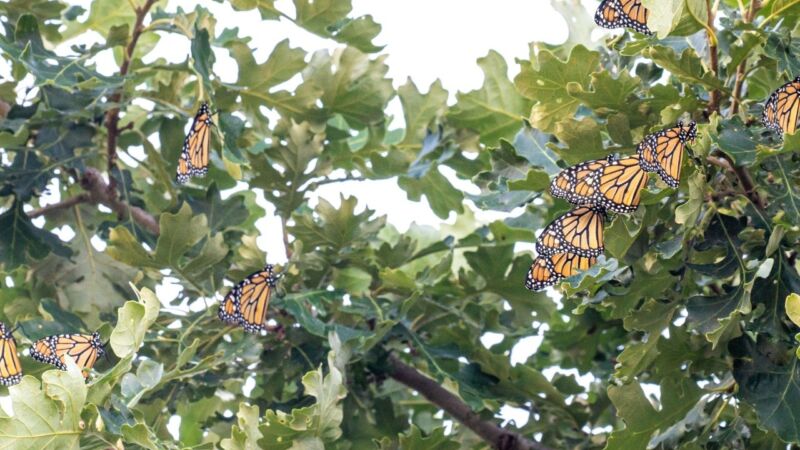
By Dr. Karen Oberhauser
Eastern migratory monarchs that emerge as adults around mid-August or later will be in reproductive diapause and will spend their first few months of “adulthood” flying to their overwintering sites in Mexico. Instead of being ready to mate and lay eggs three to five days after emerging, these individuals will delay reproductive maturity until spring 2026.
This change is triggered by hormonal changes, which were themselves the results of exposure to environmental cues: decreasing daylength, cooler nights, and senescing host plants during development. We’re seeing decreasing numbers of eggs and larvae, and more adults focused on directional flight that will take them toward their winter grounds.
Interestingly, some monarchs that emerge later in the summer but before mid-August, while not in reproductive diapause, also head south. Instead of laying all of their eggs where they developed, and where their offspring would be exposed to cooler conditions and thus slower development, these monarchs move southward as they lay eggs. This “pre-migration migration” has been documented by Monarch Larva Monitoring Project (MLMP) volunteers in the middle and south of the eastern half of the U.S., who see increased egg numbers at the end of the summer.
Journey North volunteers in the north are beginning to document migratory roosts; as of Aug. 24 there are over a dozen roost reports, in North Dakota, Minnesota, the Upper Peninsula of Michigan, Wisconsin, and Southern Ontario, but these reports will pick up over the next few weeks. For an up-to-date picture, visit the monarch fall roost map. The dots with white squares provide amazing photos and every dot includes an observer report.
In Chatham, Ontario, Marilou reported on Aug. 21 that monarchs were gathering in a familiar spot.
"I saw big numbers of monarchs nectaring on cup plant and Mexican sunflowers all afternoon at my rural home. I decided to check the silver maple trees in the front yard just before sunset," Marilou wrote. "I found this cluster of 8 with many more searching for a place to rest. These trees have been a popular monarch overnight resting place for a number of years now."
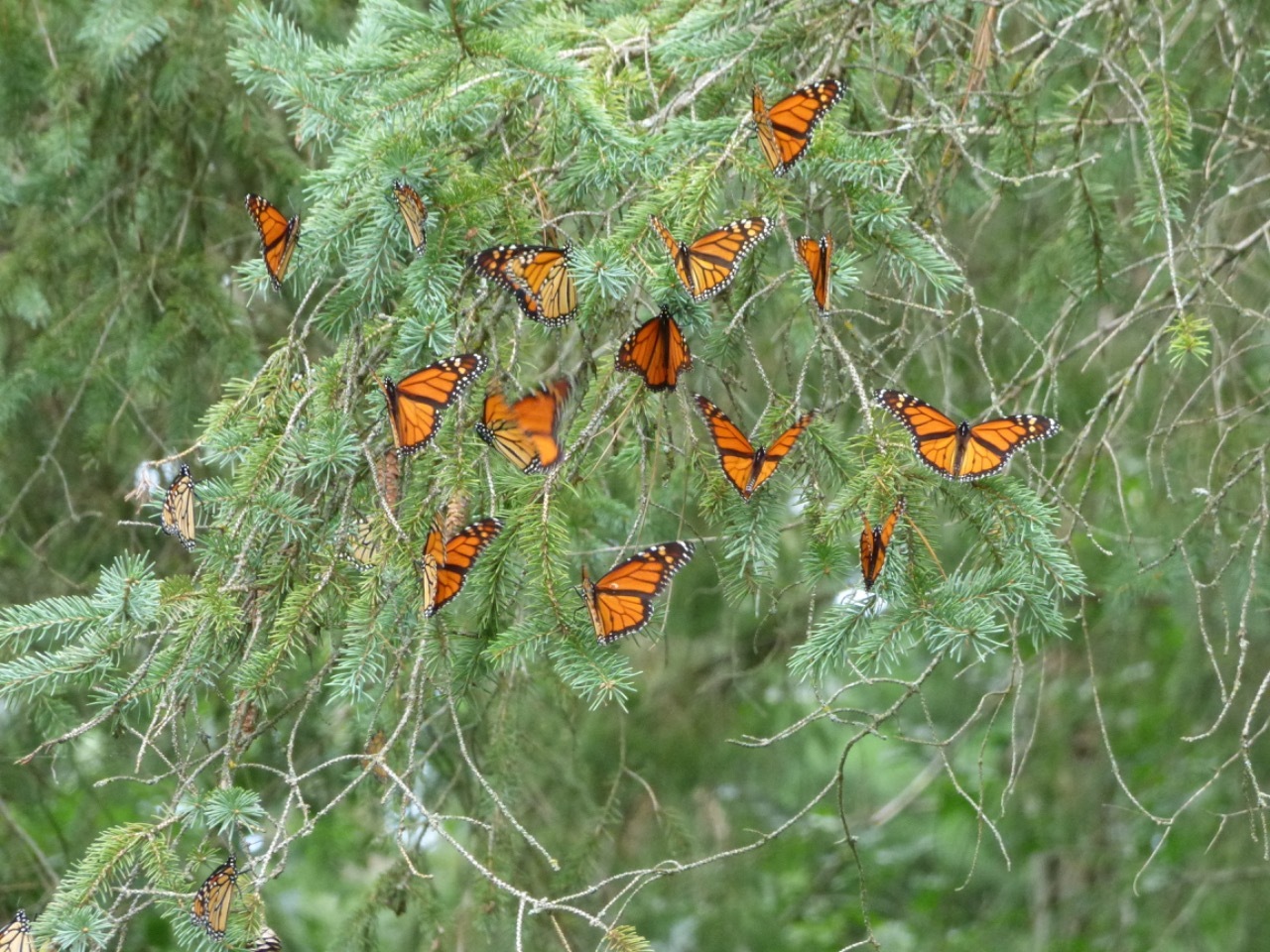
"We live in SE Minnesota on the Mississippi River adjacent to 135 acres of planted conservation prairie. Many falls we host monarch roosts along the wooded edge of the prairie," Diane in Red Wing, Minnesota wrote on Aug. 23. "This week the first roost of 2025 has formed with increasing numbers of monarchs each day. The wind is coming from the NW at 15-20 mph.
How did monarchs fare in 2025?
Monarch numbers continued to be relatively high throughout their main breeding range, at least compared to the last several years, through August. MLMP volunteers have documented strong egg and larva densities, and many people are reporting that they’re seeing many adults.
Promising July “density humps” in most of the Upper Midwest continued into August, with fairly good numbers even past mid-August. All of the eggs and larvae we see after about the end of July will become migratory adults (if they survive), so we should be sending off good numbers to the south.
The maps below compare 2025 and 2024 egg and larva densities in Wisconsin. Note the large increase in per-plant density of monarch eggs and larvae from June to July in 2025. The 2025 dips during the weeks of June 8 and July 20 reflect rainy conditions, when monarchs weren’t laying many eggs. Note also the bigger increase from the first to the second “humps” in 2025, reflecting more population growth.
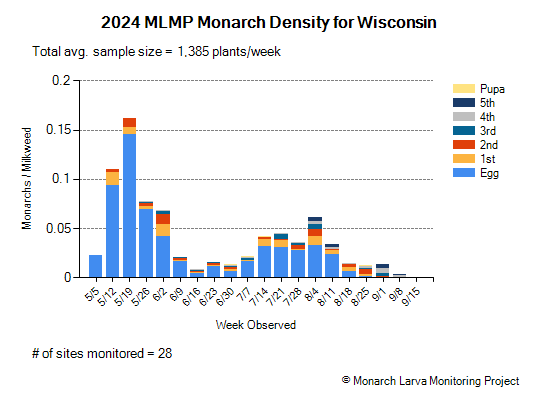
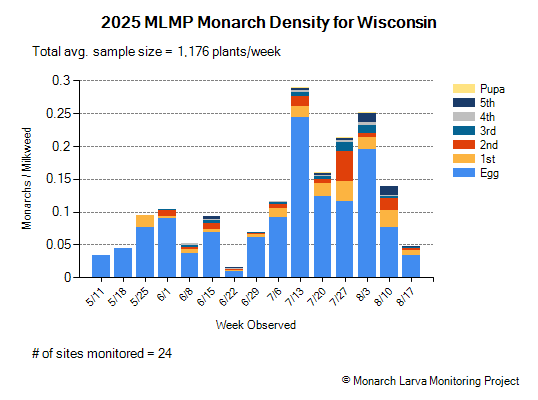
For more detailed comparisons across years and in your own state, see the results page of the MLMP website.
Of course, these migratory adults still need to make it all the way to Mexico, but drought conditions in Texas have lessened (albeit in dramatic and sometimes destructive ways), and monarchs should be able to find the nectar needed to sustain both the migratory flight and their overwintering period.
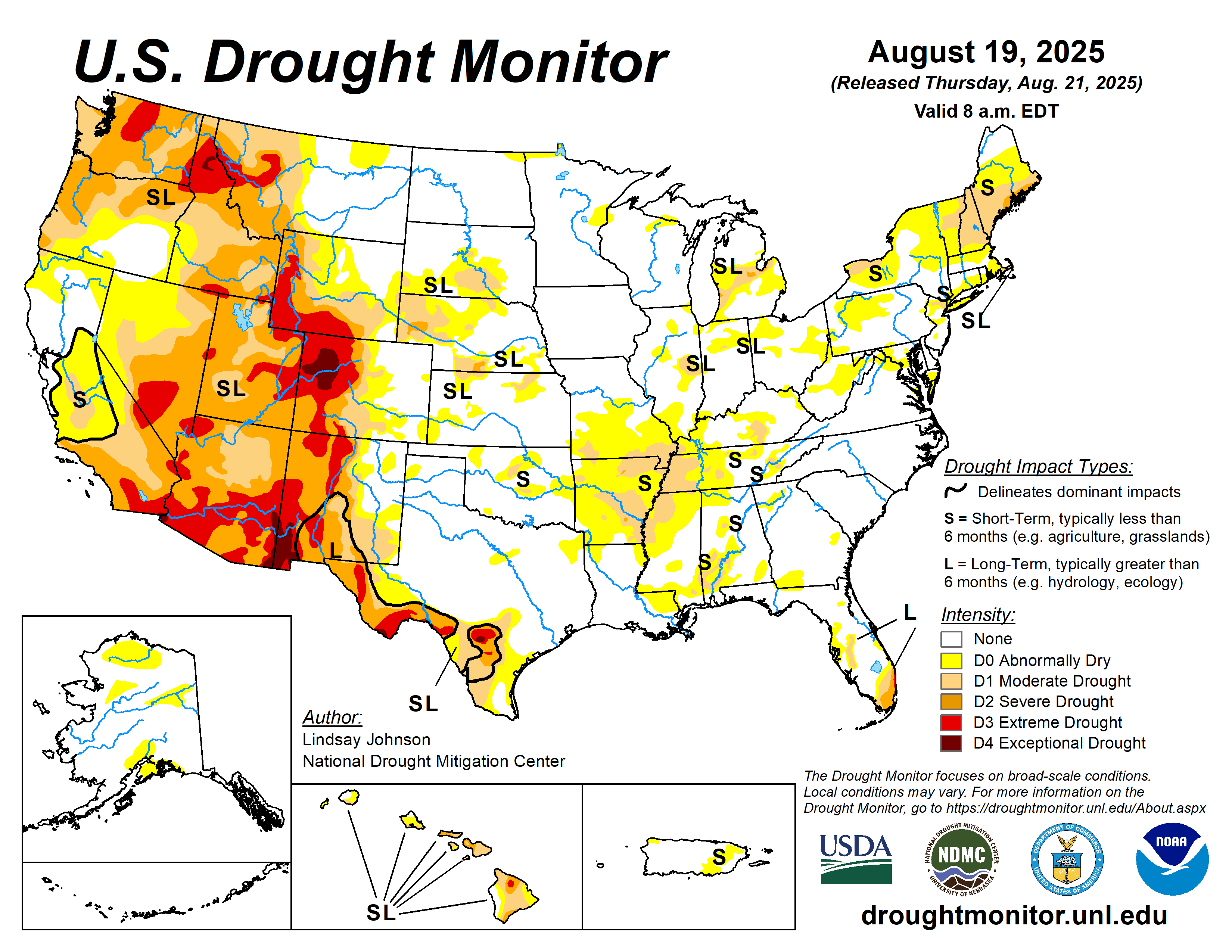
The map above from the U.S. Drought Monitor team shows the current 2025 drought map. For the first time in many years, monarchs have experienced consistently benign conditions throughout their eastern breeding range, and this good luck might continue through the migration. This map bodes well for the eastern migratory population!
Thanks to Journey North (housed by the Monarch Joint Venture) and Monarch Larva Monitoring Project (a collaboration between the Monarch Joint Venture and UW-Madison Arboretum) volunteers for providing the above data, and the U.S. Drought Monitor team (the National Drought Mitigation Center at the University of Nebraska-Lincoln, the National Oceanic and Atmospheric Administration, and the USDA), who provide important statistics on drought conditions throughout the U.S.
Click here to read the rest of Journey North's Aug. 21 eastern monarch update. Top image submitted to Journey North on Aug. 22 by Merri-Lee in Wallenstein, Ontario.
